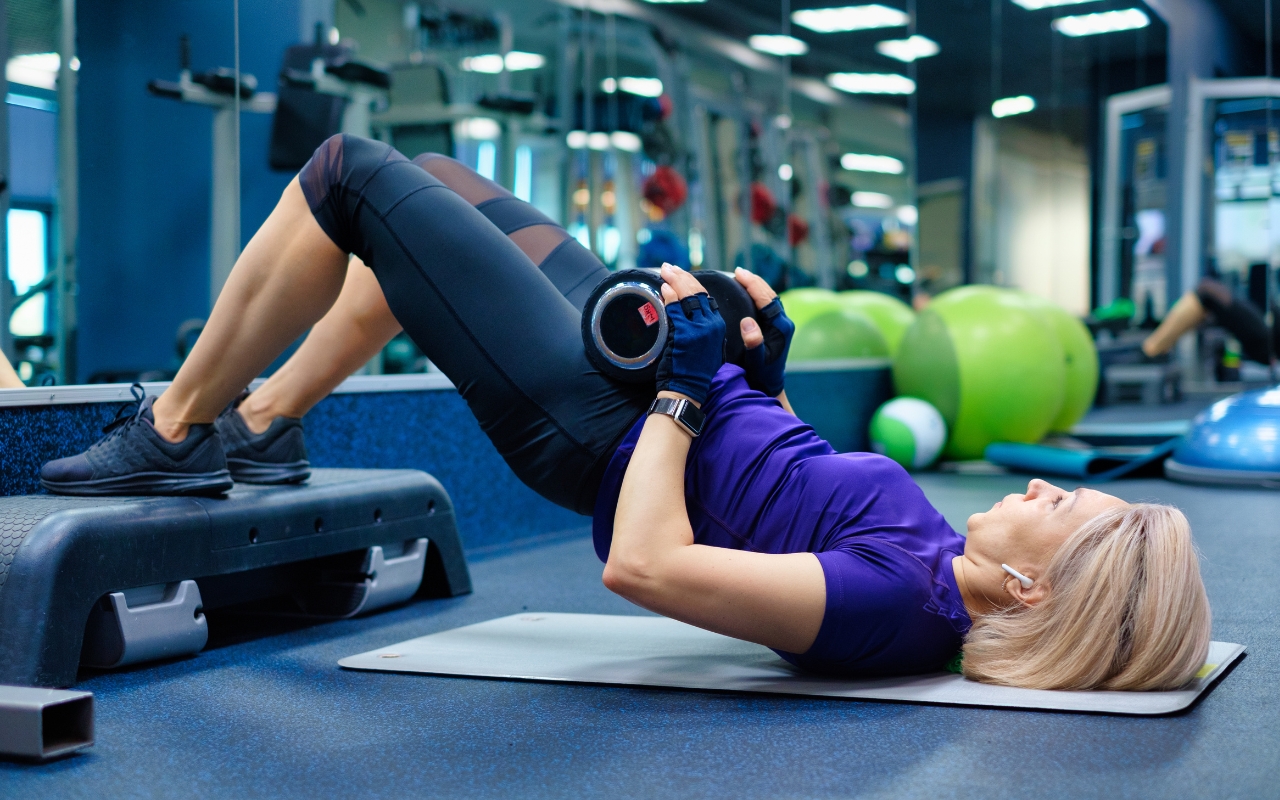Hip pain can be debilitating, affecting mobility and quality of life. Whether it's due to arthritis, an injury, or another underlying condition, managing hip pain through targeted exercises and stretches can significantly improve daily functioning. This article will provide a comprehensive guide to the best exercises and stretches to alleviate hip pain, improve flexibility, and strengthen hip muscles.
Understanding Hip Pain
Hip pain can originate from various sources, including the muscles, tendons, ligaments, bones, and joints surrounding the hip. Common causes include:
- Osteoarthritis: Degeneration of cartilage within the hip joint.
- Bursitis: Inflammation of the bursae that cushion the hip joint.
- Tendinitis: Inflammation of tendons around the hip.
- Muscle Strain: Overstretching or tearing of muscles around the hip.
- Labral Tears: Tears in the cartilage that surrounds the hip socket.
Regardless of the cause, a consistent routine of appropriate exercises can lead to significant improvements. Let's delve into the best exercises and stretches for hip pain relief.
Stretching Exercises for Hip Pain
Butterfly Stretch
The butterfly stretch targets the inner thigh adductor muscles, promoting flexibility in the hip area. To perform this stretch:
- Sit on the ground with your legs bent outwards and the soles of your feet together.
- Hold your feet and ankles, keeping your spine straight.
- Lean forward gradually, placing your elbows on the tops of your thighs, and gently push down until you feel a stretch.
- Hold for 30 seconds to one minute, then release and repeat.
Double Hip Rotation
Double hip rotations are excellent for stretching the gluteal muscles. Here’s how to do it:
- Lie on your back with your knees bent and feet flat on the floor.
- Rotate your knees to the left, bringing them towards the floor while rotating your head to face right.
- Hold your shoulders flat against the floor for 20-30 seconds.
- Return to the starting position and repeat on the opposite side.
External Hip Rotation
This stretch targets multiple muscles in the hip complex. Follow these steps:
- Sit on the ground with your legs bent outwards and the soles of your feet together.
- Place your hands on each knee and gently push down as far as comfortable.
- Hold for 10 seconds, then return to the starting position and repeat.
Figure Four Stretch
To stretch the muscles on the outer sides of your hips and the gluteal muscles:
- Lie on your back with your legs bent and feet flat on the ground.
- Place your right ankle on your left knee, then pass your hands around the back of your left leg and gently pull it towards your chest.
- Hold for several seconds, then return to the starting position and repeat with the other leg.
Knee Lifts
This stretch benefits the lower back muscles, hamstrings, and gluteal muscles. Here's how:
- Lie on your back with your legs straight.
- Bend your right leg, place your hands on your knee, and pull it towards your chest.
- Hold for 10 seconds, then lower your knee and repeat with the other leg.
Hip and Lower Back Stretch
This stretch is effective for the lower back, hamstrings, and gluteal muscles:
- Lie on your back with your knees bent and feet flat on the floor.
- Place your hands on your knees and pull them towards your chest.
- Inhale deeply, and as you exhale, pull your knees closer to your shoulders.
- Hold for 20-30 seconds while breathing normally, then lower your knees.
Hip Flexor Stretches
To stretch the hip flexors:
- Kneel on the floor with your left knee and put your right leg in front, bent at a 90-degree angle.
- Place your hands on your hips and move your pelvis and torso forward until you feel a stretch in your hip flexor.
- Hold for several seconds, then return to the start position and repeat with the other leg.
Leg Swings
Leg swings are dynamic stretches that help loosen up the hip muscles:
- Stand with your feet shoulder-width apart and hold onto a chair or back of a sofa for stability.
- Swing your leg back and forth, then from side to side, keeping your torso as still as possible.
- Repeat for each leg.
Pigeon Pose
This yoga pose stretches the lower back muscles and hip flexors:
- Position yourself on all fours as if about to do a push-up.
- Bring your right knee forward and place it behind your right wrist, with your ankle near your left hip.
- Let your upper body fold over your right leg and sink into the stretch by bending your arms.
- Hold for several seconds and return to the start position before repeating on the other side.
Yoga Squats
Yoga squats stretch the calf muscles, gluteal muscles, hamstrings, and quadriceps:
- Stand with your feet shoulder-width apart and your hands in front of you in a prayer position.
- Bend your knees and lower your buttocks as far as comfortable.
- Hold this position, then return to standing and repeat.
Strengthening Exercises for Hip Pain
Side Shuffle
To strengthen the gluteal muscles:
- Place an exercise band around your ankles or just above your knees.
- Bend your knees slightly and keep your feet pointing straight ahead.
- Side shuffle 10-12 steps in one direction, then 10-12 steps in the other.
Bridging
Bridging strengthens the gluteal muscles and hamstrings:
- Lie on your back with your legs bent and feet flat on the floor.
- Place your arms by your sides with palms flat on the floor.
- Gradually lift your pelvis and lower back, keeping your shoulders and upper body flat on the floor.
- Hold for five seconds, then lower your pelvis and lower back down.
Chair Stands
Chair stands to strengthen the quadriceps, hamstrings, gluteal muscles, and abdominal muscles:
- Sit on a chair with the back against the wall.
- Cross your arms over your chest, with each hand on the opposite shoulder.
- Lean your upper body back into the chair, then bring it forward and stand up.
- Sit back down and repeat.
Donkey Kicks
Donkey kicks target the gluteal muscles:
- Get on all fours with your knees bent below your hips and hands below your shoulders.
- Keep your right knee bent, lift your left leg, and bend upwards at 90 degrees.
- Hold the position for a few seconds, then lower your leg and repeat.
Hip Abduction
To strengthen the hip abductors:
- Stand next to a chair or wall with your feet together.
- Reach your left arm out to hold onto the supporting object.
- Lift your right leg to the side, keeping your left leg straight.
- Hold for five seconds, then lower your leg and repeat with the other leg.
Hip Extension
Hip extensions strengthen the hamstrings and gluteal muscles:
- Stand in front of a chair or wall with your feet shoulder-width apart.
- Keep your right leg straight, and lift your left leg backward as far as you are comfortable.
- Clench your buttocks and hold for five seconds, then lower your leg and repeat with the other leg.
Hip Flexions
To strengthen the hip flexors:
- Stand near a chair or wall with your feet shoulder-width apart.
- Reach any arm out to hold onto the supporting object.
- Raise your right knee to hip level, keeping your left leg straight.
- Hold for one second, then lower your leg and repeat with the other leg.
Lateral Squat
For stretching the inner thigh adductor muscles, quadriceps, and gluteal muscles:
- Stand with your feet double shoulder-width apart and toes slightly pointed out.
- Keep your left leg straight and shift your weight to your right leg.
- Push your hips back as if you're about to sit in a chair, and lower your buttocks as far as possible.
- Hold this position, return to standing, and repeat on the other side.
Additional Considerations
Monitoring Pain Levels
It's essential to monitor your pain levels during and after exercise. A helpful way to do this is by rating your pain on a scale of 0 to 10, with 0 being no pain and 10 being the worst pain imaginable. Mild discomfort is normal, but if you experience sharp or severe pain, stop the exercise immediately and consult a healthcare professional.
Seeking Professional Advice
If you have chronic hip pain or a condition that affects your hips, consulting a healthcare provider before starting a new exercise routine is advisable. They can provide personalized advice and ensure the exercises are appropriate for your condition.
Consistency is Key
For the best results, perform these exercises regularly. Aim for at least three times per week, gradually increasing the duration and intensity as your strength and flexibility improve.
External Resources for Further Reading
For more information on managing hip pain and additional exercises, check out the following resources:
- Spire Healthcare: Best Exercises and Stretches for Hip Pain
- NHS: Exercises for Hip Problems
- Surrey Physio: Top 5 Exercise Band Exercises for Your Hips
These resources provide a wealth of information on hip pain management, ensuring you have access to the best advice and techniques.
Incorporating these exercises and stretches into your routine can significantly alleviate hip pain, improve your mobility, and enhance your overall quality of life. Remember, consistency and proper form are crucial for achieving the best results. With dedication and patience, you'll be on your way to pain-free hips in no time.










